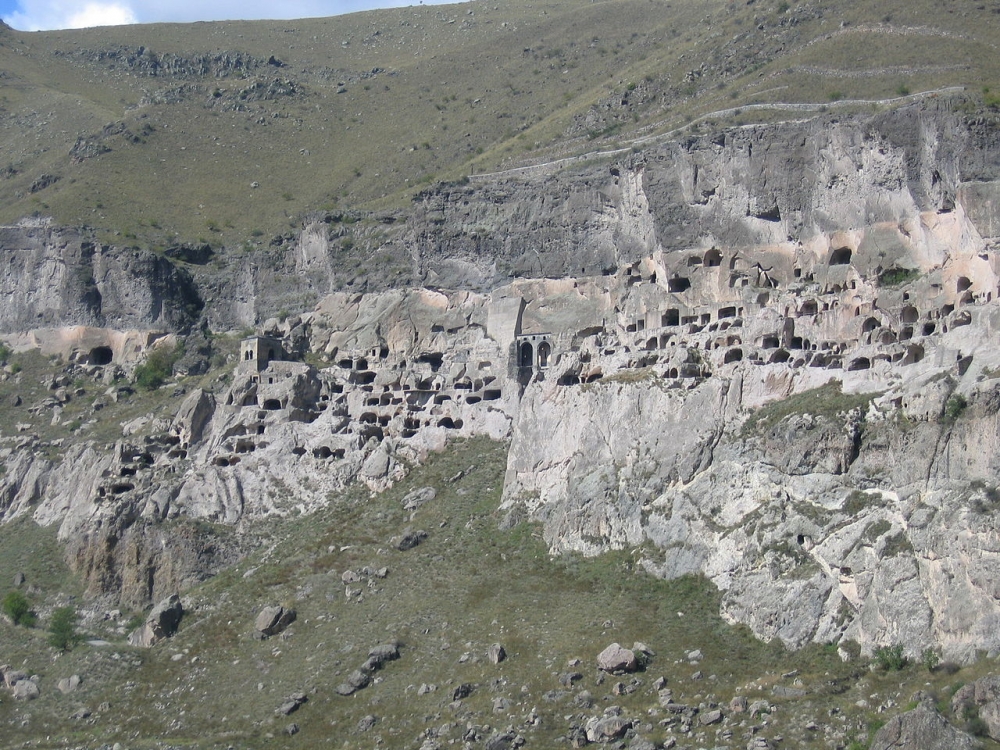Vardzia (Georgian: ვარძია) is a cave monastery site in southern Georgia, excavated from the slopes of the Erusheti Mountain on the left bank of the Mtkvari River, thirty kilometres from Aspindza. The main period of construction was the second half of the twelfth century. The caves stretch along the cliff for some five hundred metres and in up to nineteen tiers. The Church of the Dormition, dating to the 1180s during the golden age of Tamar and Rustaveli, has an important series of wall paintings. The site was largely abandoned after the Ottoman takeover in the sixteenth century. Now part of a state heritage reserve, the extended area of Vardzia-Khertvisi has been submitted for future inscription on theUNESCO World Heritage List
The greater Vardzia area includes also the early eleventh-century church at Zeda Vardzia and the tenth- to twelfth-century rock village and cave churches of Ananauri. The main lower site was carved from the cliff's central stratum of tufaceous breccia at an elevation of thirteen hundred metres above sea level. It is divided into an eastern and a western part by the Church of the Dormition. In the eastern part of the complex are seventy-nine separate cave dwellings, in eight tiers and with a total of 242 rooms, including six chapels, "Tamar's Room", a meeting room, reception chamber, pharmacy, and twenty-five wine cellars; 185 wine jars sunk into the floor document the importance of viticulture to the monastic economy.
Since 1985 the site has formed part of the Vardzia Historical–Architectural Museum-Reserve, which includes forty-six architectural sites, twelve archaeological sites, and twenty-one sites of monumental art.[2][6] In 1999 Vardzia-Khertvisi was submitted for inscription on the UNESCO World Heritage List as a Cultural Site in accordance with criteria ii, iii, iv, v, and vi.[6] In their evaluation, advisory bodyICOMOS cited Göreme in Cappadocia as the closest comparandum amongst cave monastery sites of international significance.[6] In 2007 Vardzia-Khertvisi was resubmitted as a mixed Cultural and Natural Site in accordance also with criterion vii.[3] From 2012,conservation of the wall paintings in the Church of the Dormition is to be carried out by the Courtauld Institute of Art in conjunction with the National Agency for Cultural Heritage Preservation of Georgia and Tbilisi State Academy of Arts
Vardzia
Date 2015-07-14 13:58:33 Category:




